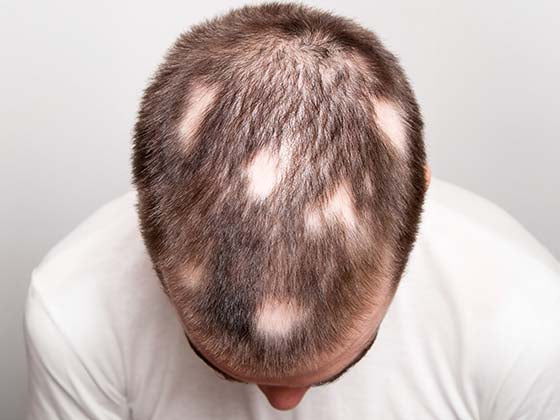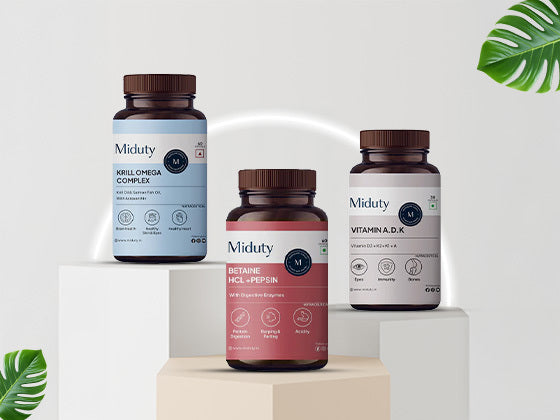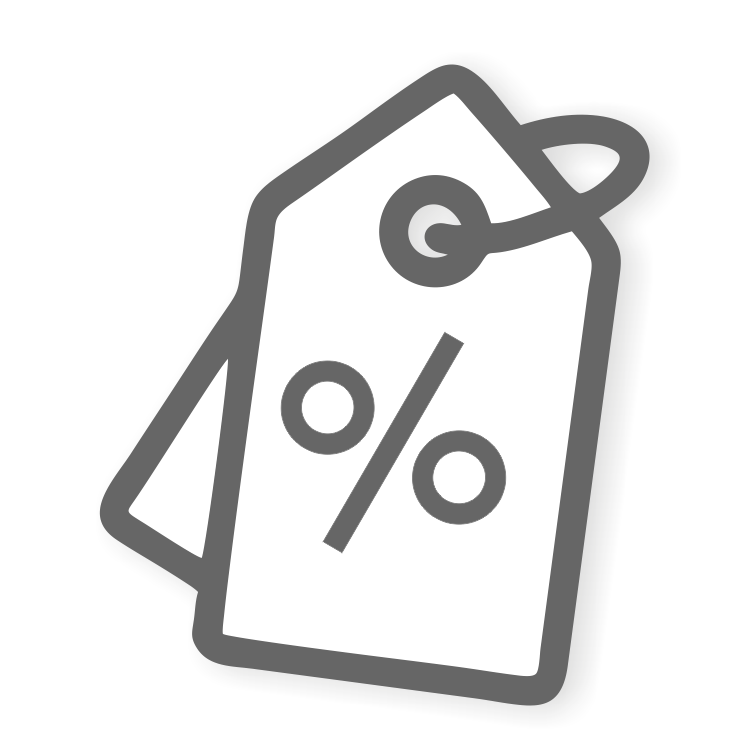Some of the most unpleasant side effects of cancer therapies may not result in physical discomfort. They may not induce fatigue or intestinal problems. And they may only be temporary. However, for some cancer patients, hair loss may be one of the most upsetting side effects of the treatment.
Hair loss, or alopecia, can leave you feeling vulnerable, self-conscious, and exposed as a "cancer patient." Hair loss is also a visible indication that your life has altered, which may elicit sentiments of rage and depression. You may also be presented with inquiries from others that you are not yet prepared to answer. In this article, we'll go over several practical and emotional coping tactics for chemotherapy-induced hair loss.
Understanding Hair Loss Due to Chemotherapy

Every year, millions of newly diagnosed cancer patients receive chemotherapy. In addition to killing cancer cells, chemotherapy is likely to harm quickly reproducing healthy cells, such as hair follicle keratinocytes. Chemotherapy causes significant hair thinning or loss, known as chemotherapy-induced alopecia (CIA), in roughly 65% of patients. CIA is frequently cited as one of the most distressing side effects of chemotherapy, but interventional alternatives are limited.
Why Chemotherapy Causes Hair Loss
Chemotherapy is a treatment that employs potent medications to target and eliminate rapidly proliferating cancer cells. However, these medications also affect other rapidly dividing cells in the body, such as those found in hair follicles. Here's a full description of how chemotherapy causes hair loss:
-
The hair growth cycle includes the Anagen, Catagen, and Telogen phases.
-
Chemotherapy's effect on hair follicles, including targeting rapidly dividing cells and hair follicle sensitivity.
The Timeline of Hair Loss and Regrowth

Chemotherapy-induced hair loss and regeneration have a general timetable, but the exact timing varies from person to person. Here's a summary of what you may expect:
Before Chemotherapy
- Consultation: Before beginning therapy, address the possibility of hair loss with your oncologist. They can provide information on which medicines are more likely to cause hair loss. Consider cutting your hair short or looking at different head-covering solutions ahead of time.
During Chemotherapy
-
Initial Phase (0-3 Weeks): Hair loss usually begins around 2-3 weeks after commencing chemotherapy. Brushing or washing your hair may cause more hair to fall out than usual. Your scalp may become tender or sensitive as the hair falls out.
-
Active Hair Loss (3-8 Weeks): Hair loss may become more visible, with larger clumps of hair falling out. The extent varies; some persons have full hair loss, while others have spotty or thinning hair.
-
Continued Hair Loss (8 Weeks - End of Treatment): Hair loss occurs throughout chemotherapy. Eyebrows, eyelashes, and body hair might also thin or go out.
After Chemotherapy
-
Immediate Post-Treatment (0-2 Months): Hair may start to regrow a few weeks after the final chemotherapy session. Initially, the new hair may be fine and silky, commonly known as "baby hair." The new hair may have a different texture or color than it did before treatment. For example, it could be curlier, straighter, or grey.
-
Intermediate Phase (2-6 Months): Hair continues to grow, becoming more visible and dense. You may be able to begin styling it differently. Hair texture may progressively revert to pre-treatment levels, though this can vary.
-
Long-Term Regrowth (6-12 Months): Hair normally grows and thickens over time, eventually nearing its previous length and fullness. Some persons may have long-term changes in hair texture or color.
Emotional Impact of Hair Loss During Treatment
Hair loss after chemotherapy can be a highly emotional experience that affects self-esteem, identity, and social interactions. Individuals can better handle the emotional toll of cancer treatment by understanding these feelings and employing various coping mechanisms. Seeking help from loved ones, professionals, and support groups can help you feel more comfortable and strong at this difficult time.
Practical Tips for Managing Hair Loss

Managing hair loss during chemotherapy requires practical scalp and hair care activities, as well as emotional and social coping strategies. You may manage this difficult component of therapy with resilience and confidence if you plan ahead of time, use gentle care techniques, and seek help.
Preparing for Hair Loss: What to Expect
Understanding and preparing for hair loss might assist with the emotional and practical aspects of this chemotherapy side effect. Here's what you should expect:
-
Timing of Hair Loss: Hair loss usually begins two to three weeks after commencing chemotherapy. Hair might fall out gradually or in clumps. The amount of hair loss varies according to the type and dosage of chemotherapy. Some people suffer total hair loss, while others have thinning hair.
-
Physical Sensations: Your scalp may become sore or irritated when the hair falls out. Without hair, your head may feel cooler, especially in colder locations.
-
Other Hair Loss: You may also lose brows and eyelashes. Hair on your arms, legs, and pubic area may also thin or fall off.
Scalp Care During and After Chemotherapy

Taking care of your scalp during and after chemotherapy is critical for ensuring comfort and healthy hair growth. Here are some tips to help you manage scalp care effectively:
During Chemotherapy
-
To avoid scalp irritation, use a light, sulfate-free shampoo. Look for fragrance-free cosmetics that are specifically made for sensitive skin. To avoid dryness, wash your scalp with lukewarm water rather than hot water. Pat your scalp dry with a gentle cloth. Avoid rubbing, since it can irritate the skin.
-
Use a gentle, fragrance-free moisturizer or oil to keep your scalp hydrated. Natural oils like coconut oil, almond oil, or jojoba oil can be soothing. Steer clear of heavy, greasy products that can clog pores and irritate the scalp.
-
Wear hats, scarves, or other head coverings outside to protect your scalp from the sun. If your scalp is going to be exposed to the sun, use a mild, non-comedogenic sunscreen.
-
Use pillowcases and head coverings made of soft, breathable fabrics like cotton or silk to reduce irritation. If your scalp feels itchy or irritated, apply cool compresses to soothe the skin.
-
Avoid hair products with harsh chemicals, such as dyes and perms. Refrain from using heat-styling tools like hair dryers, curling irons, and straighteners.
-
If your scalp is tender, a light, moderate massage will assist enhance blood circulation and relieve pain. Use your fingertips and avoid exerting excessive pressure. To reduce pressure on your scalp, use head coverings that fit loosely and comfortably.
After Chemotherapy
-
Be patient as your hair begins to grow back. Initially, it may be fine and soft, but it will thicken with time. Continue to use mild, sulfate-free shampoos and conditioners to care for new hair growth.
-
Once your scalp has become less sensitive, use a light exfoliating scrub to remove dead skin cells and maintain a healthy scalp environment. Use this gently to avoid irritation.
-
Wash your scalp and hair as needed, but don't overwash, as this can deplete natural oils and produce dryness. Use a small amount of natural oil to moisturize your scalp and promote healthy hair development.
-
New hair development is sensitive, so avoid hairstyles that pull on it, such as tight ponytails or braids. To minimize damage, use styling tools on the lowest heat setting.
-
Once your hair starts to grow back, regular trims can help maintain a neat appearance and encourage healthy growth.
-
A well-balanced, vitamin- and mineral-rich diet promotes overall health and hair regrowth. Stay hydrated to preserve healthy skin and hair.
-
Be mindful that new hair may have a different texture or color. This is natural and typically transient. If you have any uncommon scalp issues or chronic itching, see a dermatologist for professional help.
Choosing Wigs, Scarves, and Hats

Losing hair due to chemotherapy can be a difficult experience, but finding the correct wigs, scarves, and hats can make you feel more at ease and confident. Here are some suggestions on how to select the best solutions for you:
Choosing Wigs
-
These are generally less expensive and require less maintenance. They hold their style even after washing, making them convenient. These wigs offer a more natural look and feel. They can be styled and colored like your own hair but require more maintenance and are typically more expensive.
-
Visit a wig shop for a professional fitting. They can help you find a wig that fits comfortably and securely. Look for wigs with adjustable caps to ensure a snug fit.
-
If you want to maintain your usual appearance, choose a wig similar to your natural hair color and style. This can also be an opportunity to experiment with different styles and colors.
-
Choose wigs made from lightweight, breathable materials to reduce scalp irritation and overheating. Look for wigs with soft linings to prevent itchiness and irritation.
-
Use products specifically designed for wigs to clean and maintain them. Store your wig on a stand to help it retain its shape when not in use.
Choosing Scarves
-
Choose scarves made from soft, breathable fabrics like cotton, silk, or bamboo. These materials are gentle on sensitive scalps. Stay away from materials that could irritate your skin, such as wool or synthetic fabrics.
-
Large square or rectangular scarves are versatile and can be tied in various styles. Pre-tied scarves are convenient and easy to wear, providing a quick and stylish option.
-
Choose colors and patterns that you love and that make you feel good. Bright colors and interesting patterns can add a cheerful touch to your look. Consider selecting scarves that complement your wardrobe.
-
Experiment with different tying techniques to find what you like best. Many online tutorials can show you various ways to tie scarves.
Choosing Hats
-
These are soft, stretchy, and comfortable for everyday wear. Wide-brimmed hats offer protection from the sun and are ideal for outdoor activities. These provide full coverage and can be very stylish.
-
Look for hats with soft linings to avoid irritation on sensitive scalps. Hats with adjustable bands or ties can provide a secure and comfortable fit.
-
Choose thicker, insulated hats for colder weather to keep your head warm. Opt for lightweight, breathable hats for warmer weather to stay cool and comfortable.
-
Have a variety of hats to match different outfits and occasions. Choose styles that reflect your personality and make you feel confident.
Supporting Hair Regrowth Post-Chemotherapy

Supporting hair regeneration after chemotherapy requires loving care, a correct diet, and patience. By taking precautions to maintain and nurture your scalp and new hair, as well as getting emotional support as needed, you may confidently traverse this time and look forward to your hair's return.
Nutritional Support for Hair Health
Proper diet is essential for maintaining and fostering healthy hair. After chemotherapy, eating a well-balanced diet rich in important vitamins and minerals will aid with hair regrowth and general hair health. Here are some important nutrients and foods that can help your hair:
-
Protein: Hair is mostly composed of a protein known as keratin. Adequate protein intake is necessary for hair structure and development. Sources include lean meats, poultry, fish, eggs, dairy products, legumes, nuts, and seeds.
-
Biotin (Vitamin B7): Biotin promotes keratin formation while also strengthening hair and nails. Sources include eggs, nuts, seeds, salmon, sweet potatoes, and spinach.
-
Vitamin A: Vitamin A stimulates the production of sebum, an oily substance that moisturizes the scalp and promotes hair health. Sources include carrots, sweet potatoes, spinach, kale, and other leafy greens.
-
Vitamin C: Vitamin C is an antioxidant that promotes collagen production, which is an essential component of hair structure. It also promotes iron absorption. Citrus fruits, strawberries, bell peppers, broccoli, and kiwi are all potential sources.
-
Vitamin D: Vitamin D is known to play a function in hair follicle cycling and can help regenerate new hair follicles. Sources include fatty fish, fortified dairy products, fortified cereals, and sunshine.
-
Vitamin E: Vitamin E is an antioxidant that protects hair against oxidative stress and promotes scalp health. Nuts, seeds, spinach, broccoli, and avocado are also good sources.
-
Iron: Iron is required for red blood cells to transport oxygen to your cells, including the hair follicles. Iron deficiency can cause hair loss. Sources include red meat, chicken, fish, lentils, beans, spinach, and fortified cereals.
-
Zinc: Zinc promotes hair tissue development and repair while also keeping the oil glands around the follicles functioning properly. Sources include meat, seafood, beans, seeds, nuts, and dairy products.
-
Omega-3 Fatty Acids: Omega-3 fatty acids nourish the hair, promote thickness, and prevent inflammation, which can lead to hair loss. Fatty fish (including salmon, mackerel, and sardines), flaxseeds, chia seeds, and walnuts are all good sources.
Gentle Hair Care Practices

Gentle hair care techniques are essential, especially during and after chemotherapy, when your hair and scalp are more delicate. Here are some gentle hair care tips that can help you keep healthy hair and scalp.
-
Use Mild Shampoos: Choose sulfate-free, mild shampoos designed specifically for sensitive scalps and hair. These shampoos are less likely to remove the natural oils from your scalp.
-
Wash Hair Less Frequently: Wash your hair less frequently (2-3 times per week) to avoid over-drying the scalp and hair. Use lukewarm water rather than hot water.
-
Avoid Hot Water and Heat Styling: To prevent further drying of your scalp and hair, wash it with lukewarm or cool water. Do not use heat-styling products like blow dryers, curling irons, or straighteners. If necessary, use the lowest heat setting and spray with a heat protectant.
-
Pat Dry, Don't Rub: After washing your hair, gently pat it dry with a soft towel rather than rubbing it excessively. This prevents friction and possibly hair damage.
-
Use a Wide-Toothed Comb: Comb through your damp hair with a wide-toothed comb or a gentle detangling brush. Start at the ends and work your way up to reduce pulling and breaking.
-
Moisturize Your Scalp: Use a light, non-greasy moisturizer or scalp oil to keep your scalp moistened and avoid dryness. Avoid using too much product, which can weigh down your hair.
-
Protect Your Hair from the Sun: Wear a hat or scarf to shield your scalp and hair from direct sunlight, especially if you plan to be outside for an extended period.
-
Trim Hair Regularly: Trim your hair regularly (every 6-8 weeks) to avoid split ends and promote healthy hair growth, even if your hair is short.
-
Avoid Harsh Chemicals: Choose hair care products that do not contain harsh chemicals such as sulfates, parabens, or perfumes. These can irritate your scalp and remove your hair's natural oils.
-
Consult Your Oncologist: Ask your oncologist or healthcare provider for ideas on gentle hair care products that are appropriate for your unique needs during and after chemotherapy.
Products to Promote Hair Growth
To promote hair growth after chemotherapy, use items that enhance scalp health, stimulate hair follicles, and foster optimal regeneration circumstances. Consider the following products and components for minoxidil (rogaine): biotin supplements, essential oils, protein-rich shampoos and conditioners, scalp serums and tonics, niacinamide (vitamin B3), and adaptogenic herbs. You can encourage healthy hair regeneration after chemotherapy by using products that improve scalp health, nourish hair follicles, and increase circulation.
Final Thoughts on Navigating Hair Loss During Chemotherapy

Navigating hair loss after chemotherapy is a unique experience that demands patience, self-care, and support. You may get through this experience with strength and resilience by making proactive efforts to care for your scalp, controlling your emotions, and getting advice from your healthcare team. Remember that your hair loss does not define you, and your journey to recovery demonstrates your grit and determination.









































